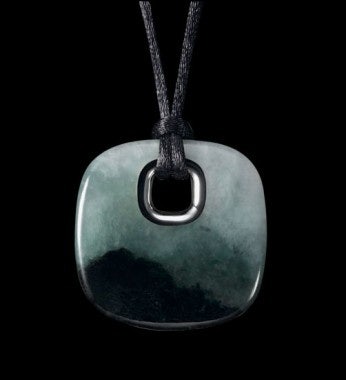Chinese Luxury Brand Qeelin, Independent Designers Incorporating Jade And Rare Jadeite Into Unique, East-Meets-West Designs#

Articles on China's jewelry industry often focus only on the country's booming demand for gold and platinum (although we too are guilty of that) or diamonds and other precious stones. But what many observers of China's jewelry market rarely notice is the country's growing demand for traditional Chinese materials like jade. Jade, coveted in China for thousands of years, and its much rarer cousin jadeite, are making a comeback among women of China's "me generation" in top tier cities who are looking to differentiate their style and set them apart from less discriminating conspicuous consumers.
As these younger women increasingly want to be seen less as "brand slaves" and more fashion-forward, jade is shaking off its stodgy reputation and, hewn by up-and-coming designers, is taking a dramatic, more youthful turn. The mix of Western and Chinese style in the new jade and (to a lesser extent) jadeite jewelry being produced by Mainland brands indicates that the future of Chinese luxury might resemble a more seamless blending of Western and traditional Chinese style.
This week, the Wall Street Journal looked into the future of jade in China -- and outside the country as well, as home-grown jewelry brands like Qeelin (who we've written about before) develop plans to spread to Western and other Asian markets.
As Chinese luxury brands struggle to find their niche outside their home market and differentiate themselves from other major brands in Asia and elsewhere, jade jewelry could prove a pathway to non-Chinese luxury consumers, many of whom have had little exposure to jade outside of old-fashioned antiques or museum exhibits.
Through the centuries, Chinese have treasured fine imperial jadeite above all other gems: Noble and wealthy households prized jadeite jewelry and objects, and artists immortalized the stone in poetry and paintings. Even through the current global economic downturn, demand for the gem has continued to soar among affluent Chinese. The Hong Kong Trade Development Council estimates that jadeite prices have risen 20% to 30% annually, on average, over the past few years. Today, a string of plain, polished round beads in the much-desired shade of green can command US$1 million.
And in a dramatic shift in tastes from the 1970s, when nearly all demand for jadeite was for traditional styles, jewelers estimate that now about 20% of pieces sold are contemporary designs.
The article explains that jadeite -- far rarer and more expensive than the more common nephrite that is plentiful throughout China and some parts of Southeast Asia -- is being incorporated by more adventurous designers to create contemporary styles that call attention to the traditional qualities of jade and jadeite while featuring a more dramatic streak that reflects the changing cultural and aesthetic forces at work in China:
At Qeelin in Hong Kong, which aims to become the first international Chinese luxury jewelry house, some of designer Dennis Chan's best-selling pendants and rings incorporate black or light-colored jadeites, materials that he likes for their cultural nuance and texture.
Hanging off a simple silk cord, the focal point of one necklace is a large piece of jadeite adorned with a dragon in diamonds and inlaid white gold (HK$188,000 or about US$24,260). A deceptively simple squarish ring whose top is the gemstone sells for HK$22,800 (US$2,940).
While jadeite might remain the most Asian of gems, Western designs for the material are proving a hit among adventurous Chinese. "Our clients are still pursuing high-quality, vivid green, transparent or translucent jadeite," says Marguerite Sam, general merchandise manager for jewelry at upscale department store Lane Crawford in Hong Kong. "What has changed is the design of the pieces, steering away from the explicitly traditional or Oriental designs." Many European designers are "presenting jade designs in a more contemporary aesthetic," she adds.
Noting the trend for new-style jadeite accessories in the Chinese market, the luxury retailer, which also has stores in mainland China, collaborated with Paris-based designers Jean Grisoni and Taher Chemirik to produce an exclusive line. Lane Crawford sourced top-grade jadeite beads and cabochons in greens, pinks and blacks that the designers set in yellow gold. The most expensive item, a pendant, retails for HK$10.8 million (about US$1.4 million).